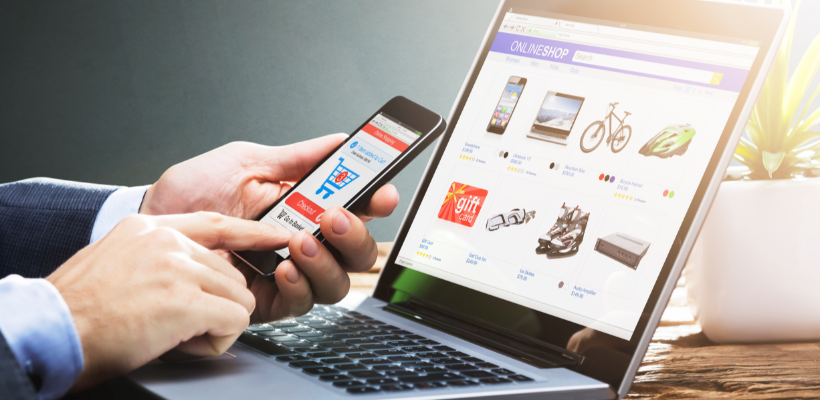In the bustling marketplace of eCommerce, a term resonates loudly amid the symphony of transactions: the "purchase order number." Akin to a digital fingerprint, the purchase order number, often shortened to "PO number," lends a unique identity to each online order.
This one-of-a-kind identifier serves as a navigational compass guiding both merchants and customers through the dynamic landscape of online shopping. From the moment a click initiates an order until the virtual invoice hits the inbox, the PO number streamlines order tracking, mitigates billing errors, and quashes any hint of misfiled orders.
While the adoption of PO numbers can span from manual creation for smaller storefronts to automated generation via eCommerce platforms for larger enterprises, the value of a PO number remains integral - a beacon of clarity in the vibrant and intricate world of online commerce.
Outline
- What Is A Purchase Order Number?
- How Do Purchase Orders Work?
- 1. A purchase order is made by the customer.
- 2. The buyer circulates to internal team members a request for authorization.
- 3. The vendor receives the purchase order.
- 4. The seller examines and approves the purchase order.
- 5. Deliveries of goods or services are made.
- 6. Payment is made on the purchase order.
- How To Create A Purchase Order Number System
- Why Is A Purchase Order Number Important?
- Benefits Of Effective Purchase Orders Number For E-Commerce
- Following incoming orders
- Avoid wrong order issues
- Offering legal defense
- Less traumatic audits
- Make budgeting easier
- Key Takeaways
What Is A Purchase Order Number?
Definition of Purchase Order
Buyers send suppliers a purchase order (PO) to specify the goods and services they wish to purchase. The PO subsequently becomes a contract once the vendor has approved it.
Simply said, purchase orders aid in the documentation of transactions between the buyer and seller by giving them a formal record to hold against discrepancies, misunderstandings, or issues with the order.
PO example:
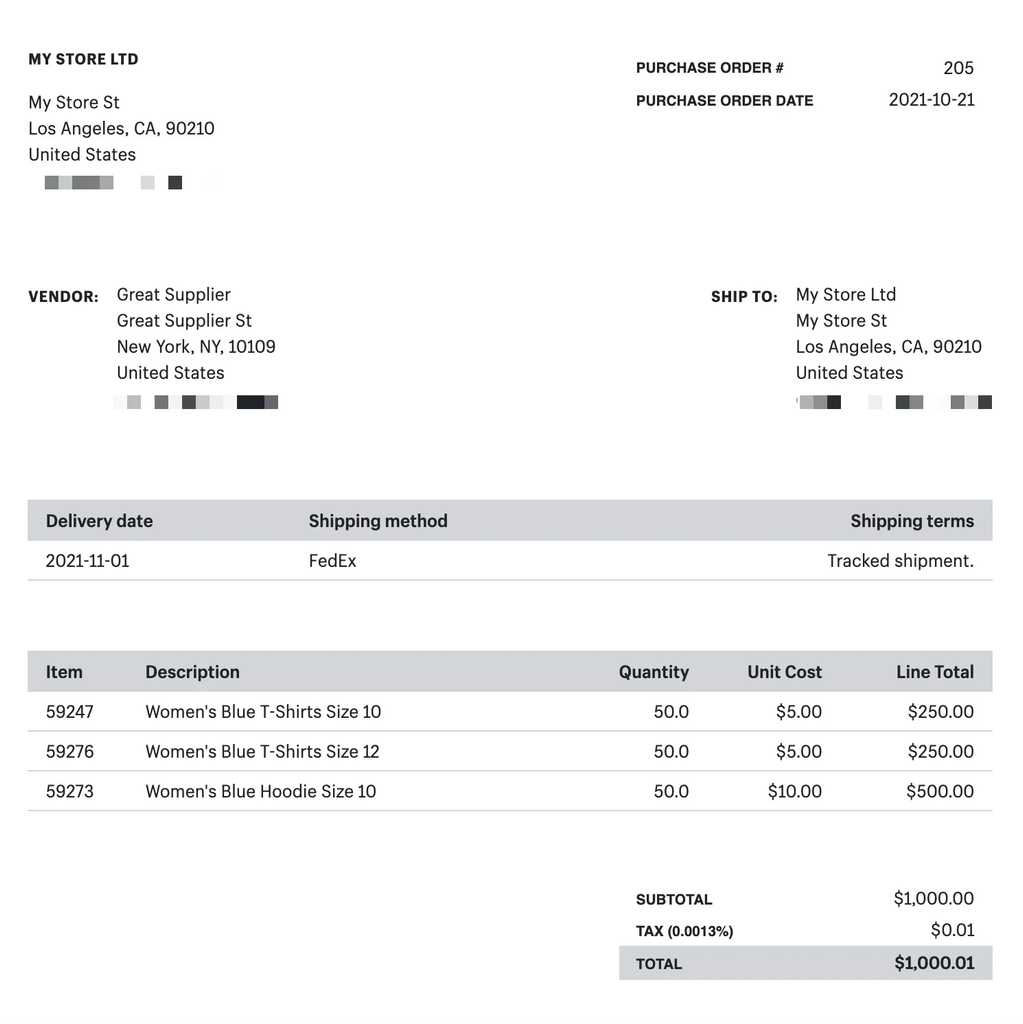
Source: Shopify
What is a purchase order number?
A purchase is given a PO number, also known as a purchase order number, is a unique number assigned, so that it may be monitored throughout the transaction process. Purchase order numbers, which are present on PO documents and are legally binding documents, make it easier for the seller and the customer to refer to their orders.
You can check a video guide about purchase order in Shopify here.

PO number vs. Invoice number
Invoices and purchase orders are frequently regarded as being identical. Even while buyers and sellers exchange both of them as legally binding documents, they are not the same. You won't always find a number on an invoice
Before the products and services are delivered, the buyer receives a purchase order and sends it to the supplier. Contrarily, an invoice is made by the seller and sent to the buyer after the products and services have been delivered.
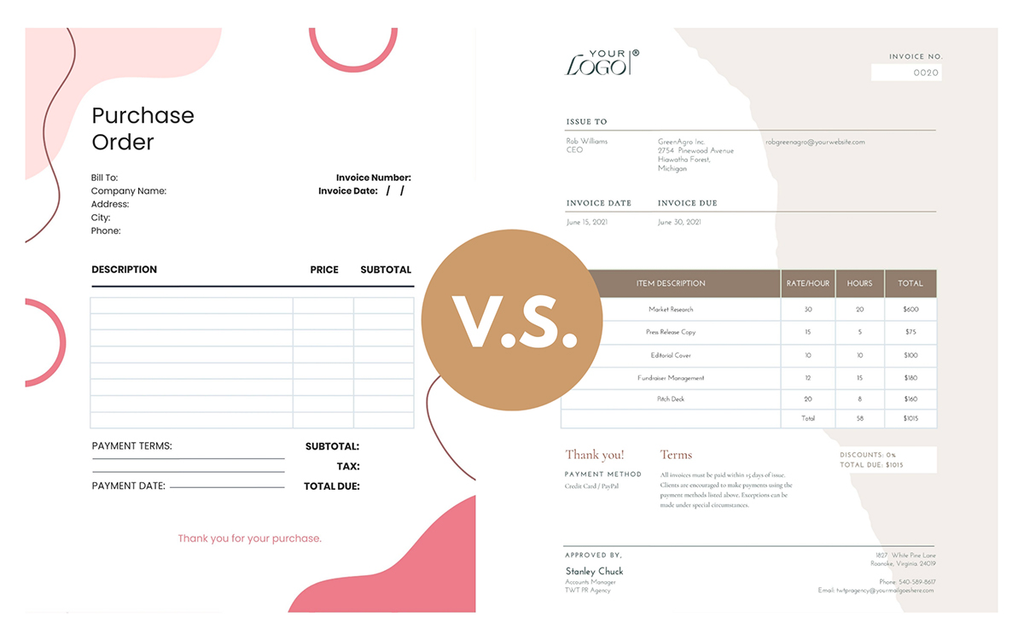
This is the primary distinction between a PO and an invoice. You can check a detailed comparison from this blog.
How Do Purchase Orders Work?
Now that we have established a solid grasp of what a PO is, let's dissect the process involved in creating one.
1. A purchase order is made by the customer.
Start by populating the necessary fields of your PO. This could include aspects such as item descriptions, unit prices, overall costs, billing and shipping addresses, along with more detailed data like the approving authority and the corresponding designation.
For instance, if you plan to send holiday gift boxes to your employees during the festive season, ascertain the number of boxes required, an approximate quantity, and the desired delivery timeframe.
Based on your needs, you may also incorporate specific pricing terms or payment transaction details. In essence, your PO should present a concise and clear depiction of the order you've placed with a vendor.
2. The buyer circulates to internal team members a request for authorization.
Before dispatching the PO to the seller, invest some time in securing necessary approvals from your team members. Share a copy of your PO with your internal staff. A standardized PO template with customized fields can be utilized for each order.
Colleagues can provide feedback, critique, or even make additional edits to the PO form to maintain transparency and accountability.
By implementing this, you and your team can conserve the time and effort typically expended in back-and-forth communications. Therefore, even with a standard template, each PO retains the flexibility of being tailored individually.
If you frequently employ POs, they should be the most accessible and visible document in your database.
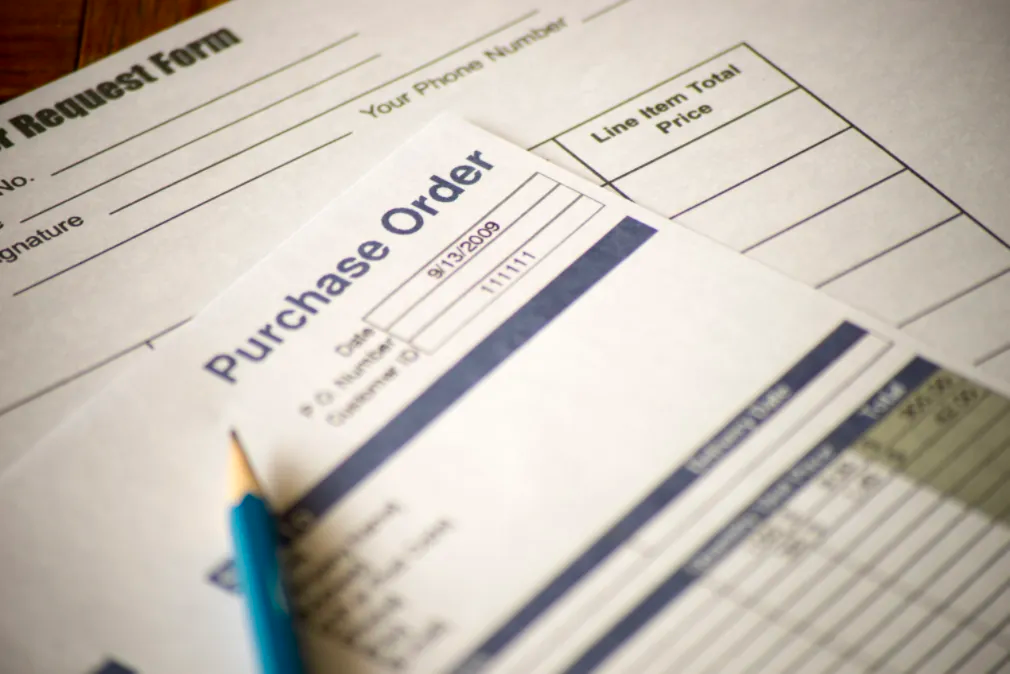
Ensure everyone involved is on the same wavelength, even if it's just two team members approving the PO. The absence of this can lead to potential miscommunications, especially concerning quantities and finances.

3. The vendor receives the purchase order.
Once the PO has received internal approval, it's forwarded to the vendor and becomes a legally binding contract. It's good practice to give the vendor a timeframe for their acceptance to expedite the process. Utilize this period to ask and answer any essential information.
Though it sounds straightforward, in practice, it often falls short. Occasionally, vendors alter their prices between the order and delivery dates while the transaction is underway. This leads to hours wasted in confusion and may even delay orders.
A vendor-signed PO can assure that both the buyer and seller have a mutual understanding and agreement on the deliverables, thereby reducing the chance of miscommunications.
4. The seller examines and approves the purchase order.
Upon receipt of the PO from the buyer, the seller scrutinizes it to determine their ability to fulfill the order. This largely hinges on key factors such as inventory, availability, price, and delivery date.
Upon the seller's agreement, the PO is deemed accepted. Subsequently, you can expect your vendor to dispatch a copy of the signed PO to your team.
5. Deliveries of goods or services are made.
Following the acceptance of the PO, the vendor is obligated to deliver the goods or services to the buyer. At this juncture, the seller may also generate an invoice for the buyer, adhering to the price stipulated in the PO. The invoice will outline the specifics of the order, including quantity and cost of goods and services.
While this step may seem redundant to some, it's pivotal as it allows you to validate and authorize the payment to the vendor. This is particularly important as your startup grows and the need for auditor compliance arises, requiring fewer individuals to handle POs and invoices.
For effective management and preservation for accounting purposes, each financial transaction must be documented. Receiving an invoice will facilitate better tracking of your business's expenditures and orders.
6. Payment is made on the purchase order.
By following this workflow and process, you can optimize how you create and manage your purchase order with the order details. Once you have received all the goods and services and paid the invoice, you can close the purchase order. In other words, consider it settled and you will know all the payment terms.

How To Create A Purchase Order Number System
Setting up a PO numbering system to keep track of your orders might be quite straightforward for a small enterprise handling a limited number of transactions. With every new deal, you have the ability to manually assign a PO number to new documents, using your custom-made PO templates.
The mix of numbers, characters, and hyphens you employ for your PO number can be customized to align with your business and its procedures. For example, your inaugural PO number could be "PO00001," and increase sequentially to "002," and so forth. If you desire a more specific and longer PO number, you have the option to incorporate the purchase date.
For businesses handling a multitude of orders on a daily basis, a manual PO numbering system may become excessively complex and inefficient. In such scenarios, an automated solution like a cloud-based software could be more proficient in auto-assigning PO numbers to purchase orders, for example: Order Printer: PDF Invoice App; Ava PDF Invoice Order Printer; or Fordeer: Invoice Order Printer.
Why Is A Purchase Order Number Important?
Whether you're on the buying or selling end, the entire purchase order process stands as a critical business document that demands vigilant tracking and compliance from all involved parties.
Every purchase order is allocated a unique reference code - PO number, streamlining order tracking and enhancing its precision. Should a customer encounter an issue with a purchase order that dates back several months, they can effortlessly locate the pertinent order and invoice by referencing the PO number.
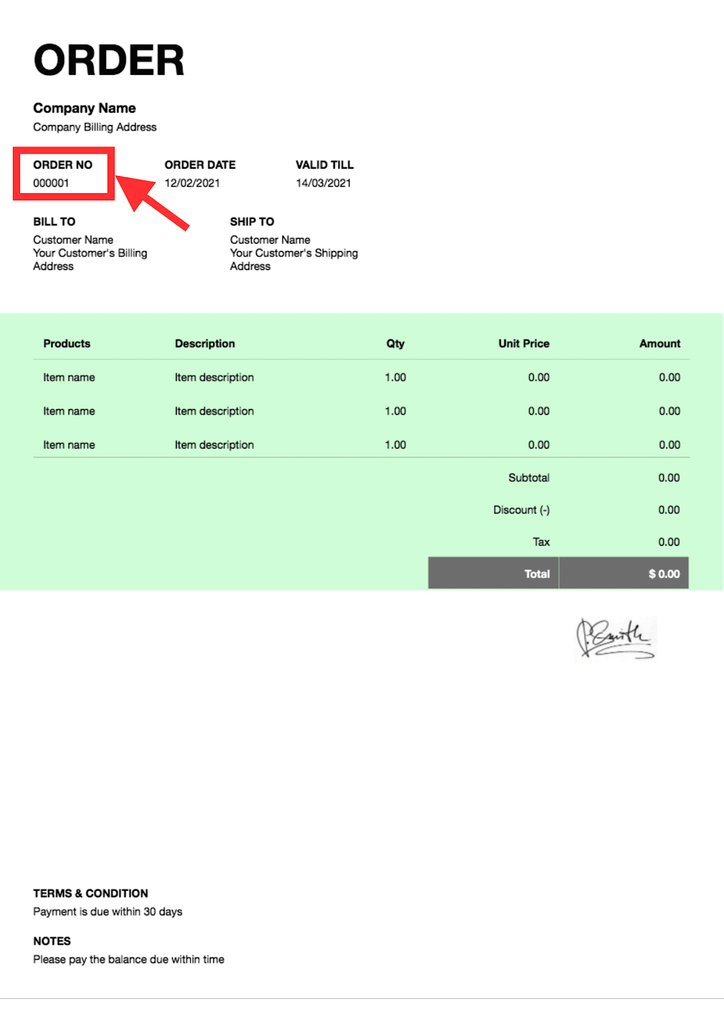
This is a PO number - Source: Deskera
If your business is the one placing orders and issuing PO numbers, you can enjoy the same advantages. A PO numbering system simplifies the process of generating codes and allows for easy retrieval and verification of transactions when needed.
Employing a PO number can help prevent financial errors such as duplicate billing, incorrect filling, and more.
Offering genuine, credible services is key to your organization's overall financial health. Mishaps like accidentally double billing a customer or delivering an incorrect item can cost your company significantly in terms of finances, time, and reputation.
Benefits Of Effective Purchase Orders Number For E-Commerce
Following incoming orders
Inventory management planning can pose a challenge, especially when dealing with a multitude of SKUs. While traversing your store, you might find yourself wondering, "Did I forget to restock this product for the coming month?".
Postponing replenishment could risk running out of popular items. On the other hand, if you kickstart the process too early, you'll end up with an excess of products in your storage. Both mistakes have financial implications.
With PO numbers, you can even set stock level restrictions for each vendor and know how to handle Inventory management. If, for instance, you try to create a PO for 80 items but your supplier enforces a minimum order requirement of 100, the PO will be modified to reflect this. This eliminates the need for time-consuming back-and-forth communications.
Avoid wrong order issues
Miscommunication is inevitable when orders are placed over the phone. There's a chance that a supplier might hear you ordered 90 t-shirts when you actually mentioned needing 19. The outcome? A hefty order delivered to your store followed by a staggering invoice.
According to Daniel Carter, SEO Manager at Skuuudle, purchase orders provide a precise record of what you ordered and the price at which it was done, eliminating the risk of duplicate payments. They effectively articulate all the details of the purchase. This type of documentation safeguards you from any order mishaps and reduce errors like the potential for confusion during a phone order.
Owners of e-commerce businesses utilize purchase orders for several reasons beyond what we've already discussed. In addition to fundamental tracking and documentation, incorporating POs into your purchasing process offers a host of benefits. Before we delve into the different types of purchase orders, let's explore these substantial advantages.
Offering legal defense
What if you order 40 blank white t-shirts for your online t-shirt business and instead receive a mix of shirts in five different colors? Your first move when an order goes awry is likely to contact the supplier for correction, but what if their record of the order differs from what you know you placed?
Such discrepancies can be time-consuming for both parties to resolve, but they can also be avoided. At this point, a PO is seen as a legally binding document. By employing a comprehensive purchase order system, which includes a PO signed by all parties, you can create a legal document that holds everyone accountable to fulfill their part of the deal.
In case of a dispute regarding the price, quantity, or technical specifications of an order, you can refer back to the purchase order. This quickly solves a problem that could have otherwise strained productive business relationships or potentially led to legal complications.
Less traumatic audits
The thought of being audited is not appealing to anyone, but it's a possibility that every business owner needs to keep in mind. Utilizing purchasing software might not guarantee immunity from audits, but it can certainly make them easier to navigate if they occur. Your PO numbers can serve as evidence of the transactions your business has conducted over any given period. You no longer need to sort through piles of paper receipts or print out countless emails for proof when you have a purchase order document.
Make budgeting easier
With a dedicated purchase order system in place, you're always certain of what you'll be paying for an order. When a customer issues a PO for your goods or services, you can verify if their price expectations are in line and approve the order, making it legally binding. There's less room for disputes and unpleasant surprises over what one party anticipates paying and what the other expects to receive.
You may find that utilizing specialized purchase software for your business offers other advantages. Having covered some of the most significant benefits that apply to all businesses, it's now time to look at different types of purchase orders and how they might be relevant to your business.
Key Takeaways
Alright, before we wrap up, let's recap the key points we've touched upon today:
- Every purchase order is assigned a unique identifier, known as a PO number.
- This is created by the buyer, and is referred to by both the seller and buyer throughout the transaction.
- Sellers sometimes even attach the PO number to their sales invoice to ensure they are billing the right customer for the exact order.
- PO numbers aid in making order tracking faster and more accurate, and also act as a safeguard against potential double billings and erroneous filings.
- A PO number system can be generated either manually or automatically using accounting software.
- The manual approach is suitable for businesses with a small volume of transactions. For larger companies, however, it's advised to use online accounting software like Deskera.





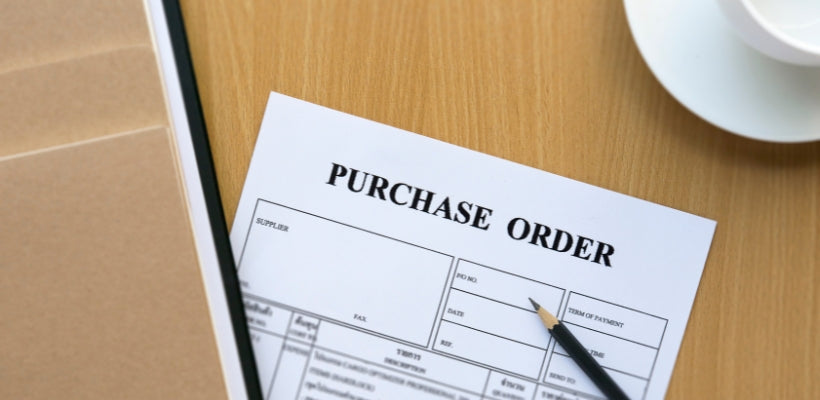

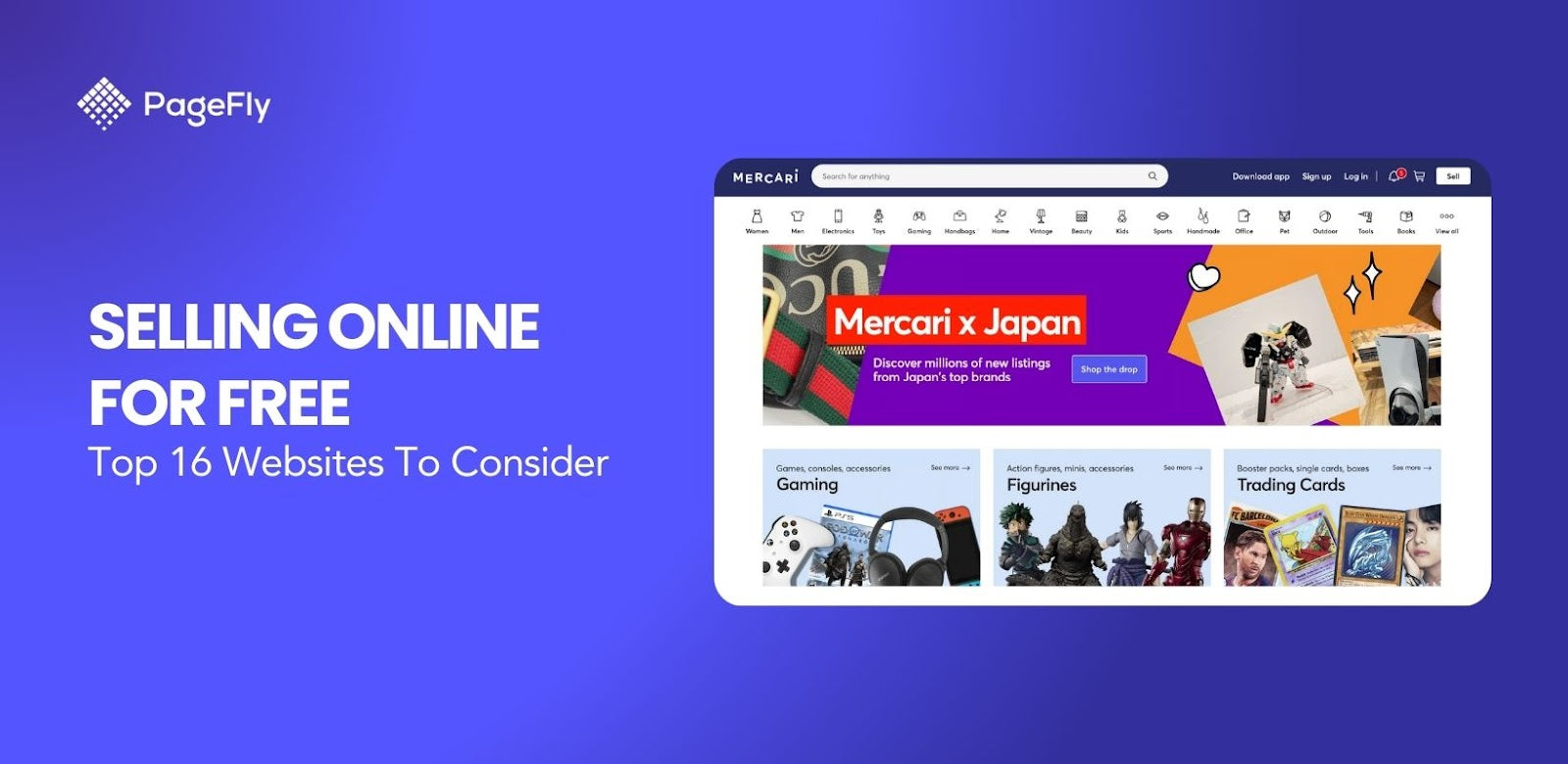
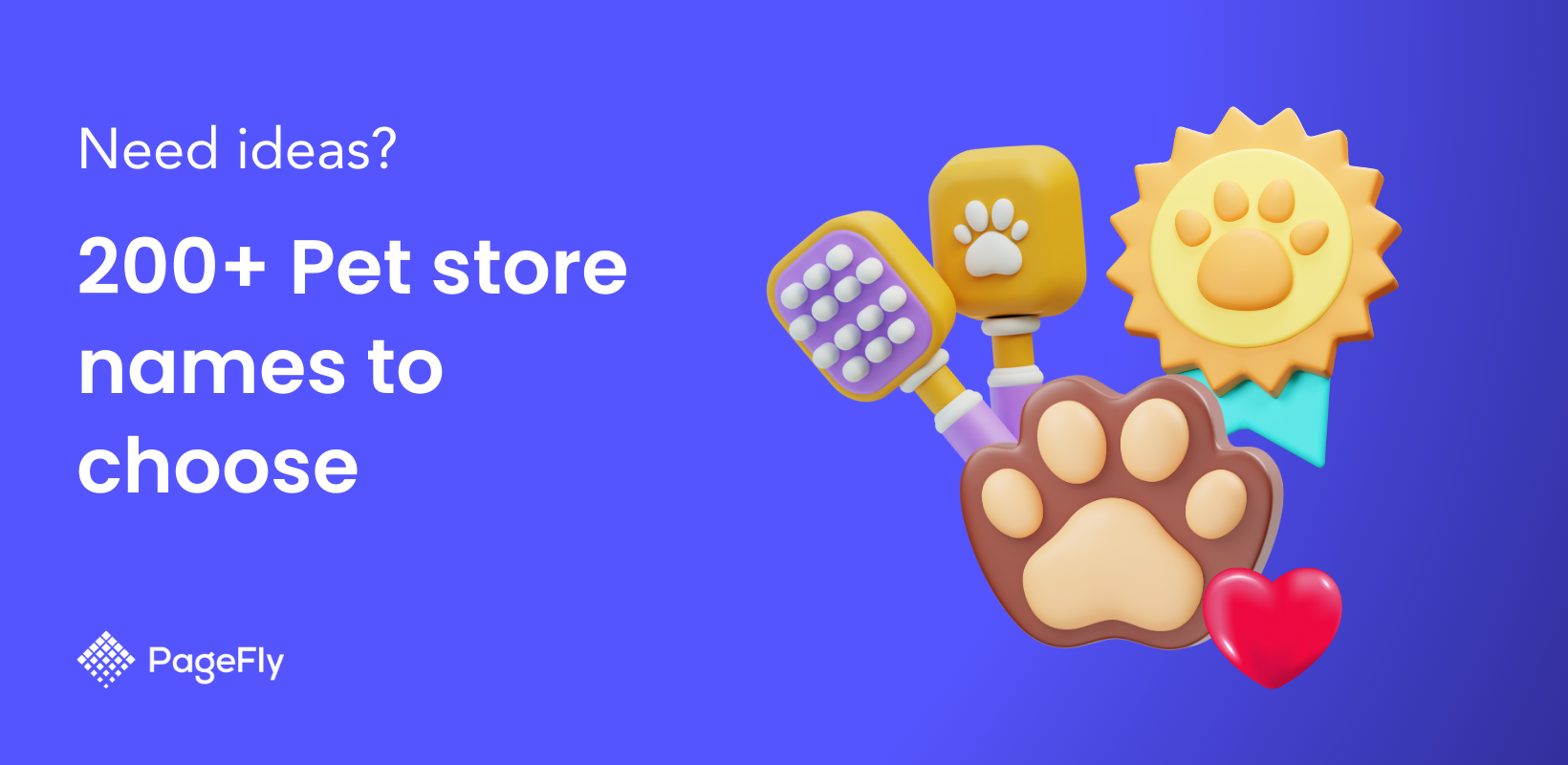
![14 Profitable Small Food Business Ideas for 2025 [Real Numbers]](http://pagefly.io/cdn/shop/articles/1_58b587d2-13db-4aa6-8c19-e40f5c88d3eb.jpg?v=1758255771&width=4460)
![Art Business Names: 350+ Ideas + Free Generator [2025 Updated]](http://pagefly.io/cdn/shop/articles/art_business_name_e94a54e9-d325-4ba3-94ab-7b4297952312.png?v=1760062968&width=1640)



